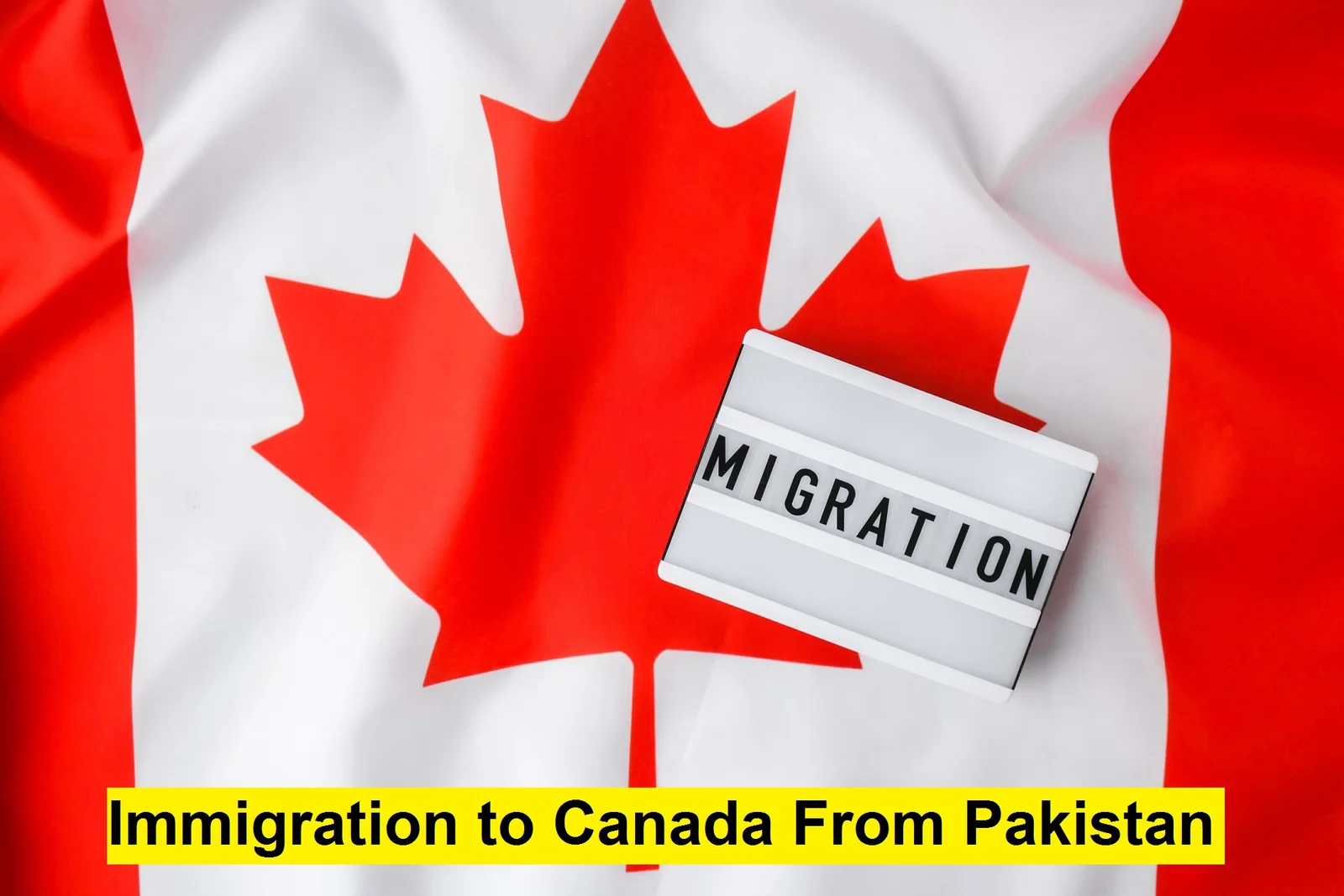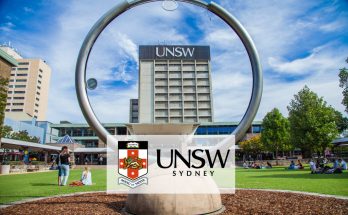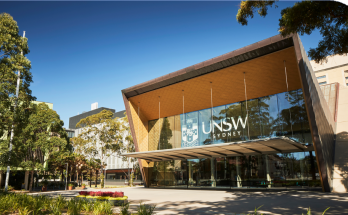Canada Immigration

Navigating the Path: Your Ultimate Guide to Canada Immigration in 2023
Canada, renowned for its stunning landscapes and welcoming communities, continues to be a top destination for individuals and families seeking new opportunities and a fresh start. However, navigating the complex immigration process can often feel daunting, especially with the ever-evolving policies and requirements of 2023. Whether you’re considering temporary residency, pursuing permanent status, or looking for pathways to citizenship, understanding the ins and outs of Canada’s immigration system is crucial for a successful transition. In this ultimate guide, we will break down the latest immigration options, provide tips for compiling your application, and equip you with essential insights to help you confidently navigate your journey to becoming a part of the Great White North. Join us as we explore the steps to making your Canadian dream a reality!
1. Introduction to Canada Immigration in 2023
Canada has long been recognized as a land of opportunity, drawing individuals and families from around the globe seeking a fresh start, better job prospects, and a chance to enjoy a high quality of life. As we step into 2023, the landscape of Canada immigration continues to evolve, shaped by shifting policies, economic needs, and the broader global context. This year, Canada remains committed to welcoming newcomers, with ambitious immigration targets set to address labor shortages and promote diverse communities across the country.
In this introduction, we delve into the key aspects of the Canadian immigration system as it stands today. From the various pathways available—including Express Entry, Provincial Nominee Programs (PNPs), and family sponsorships—to the latest updates on eligibility criteria and application processes, our aim is to equip prospective immigrants with the necessary knowledge to navigate their journey effectively.
Canada’s immigration policies in 2023 reflect a robust response to demographic challenges, emphasizing the need for skilled workers, international students, and family reunification. With a focus on inclusivity and multiculturalism, the country not only seeks to fill gaps in its labor market but also to enrich its cultural fabric with diverse perspectives and experiences.
As we explore the intricacies of Canada’s immigration system, we will highlight essential tips and resources to streamline your application process, ensuring that you are well-prepared for this life-changing endeavor. Whether you are looking to settle in bustling urban centers like Toronto and Vancouver or prefer the charm of smaller communities, understanding the current immigration landscape is your first step toward making Canada your new home. Join us as we embark on this comprehensive guide to Canada immigration in 2023, paving the way for a successful transition into one of the world’s most welcoming nations.
2. Understanding Canada’s Immigration Policies
Canada is known for its welcoming stance towards immigrants, but navigating its complex immigration policies can be overwhelming for many. In 2023, understanding these policies is crucial for anyone looking to make Canada their new home. The Canadian government has established a variety of immigration programs designed to address the diverse needs of potential immigrants, ranging from skilled workers and students to family reunification and refugees.
At the heart of Canada’s immigration framework is the Express Entry system, a points-based mechanism that assesses candidates based on criteria such as age, education, work experience, and language proficiency. This system aims to attract skilled individuals who can contribute to Canada’s economy and society. In 2023, the government has made adjustments to the points allocation, prioritizing occupations in high demand and emphasizing the importance of French and English language skills.
Additionally, Provincial Nominee Programs (PNPs) allow individual provinces to tailor their immigration strategies to meet local labor market needs. This means that, depending on where you wish to settle, different criteria and pathways may apply. Understanding the specific requirements of the province you’re interested in is essential, as each has its own set of regulations and nomination processes.
For family members of Canadian citizens or permanent residents, the Family Class Sponsorship program offers a pathway to reunite with loved ones. In 2023, Canada has expressed a commitment to expediting these applications, recognizing the importance of family connections in the immigration process.
Moreover, Canada’s commitment to humanitarian efforts is reflected in its refugee and asylum policies. The government continues to provide safe haven for those fleeing conflict and persecution, with streamlined processes to support vulnerable populations.
As you navigate the intricate web of Canada’s immigration policies, staying informed about the latest changes and understanding the requirements for each program will be your greatest asset. Whether you’re applying for permanent residency, a study permit, or a work visa, ensuring that you meet the necessary criteria and assembling a complete application will enhance your chances of success in this promising journey to Canada.
3. Types of Immigration Programs Available
When considering a move to Canada, understanding the diverse range of immigration programs available is crucial to finding the right fit for your unique situation. Canada offers several pathways for prospective immigrants, each designed to cater to different needs and qualifications. Here’s a closer look at the primary types of immigration programs available in 2023:
1. **Express Entry**: This is one of the most popular immigration pathways for skilled workers. The Express Entry system manages applications for three federal economic immigration programs: the Federal Skilled Worker Program, the Federal Skilled Trades Program, and the Canadian Experience Class. Candidates are assessed based on various factors, including age, education, work experience, and language proficiency. Those with the highest scores are invited to apply for permanent residence, making it a competitive yet streamlined option for skilled individuals.
2. **Provincial Nominee Programs (PNPs)**: Each province and territory in Canada has its own immigration programs tailored to meet local labor market needs. PNPs allow provinces to nominate individuals for permanent residence, based on their skills and the demand in that region. This can be an excellent option for those who may not meet the criteria for Express Entry but have the qualifications that a specific province is looking for.
3. **Family Sponsorship**: If you have family members who are Canadian citizens or permanent residents, they may be able to sponsor you for immigration. This program is designed to reunite families and allows sponsors to bring their spouse, partner, children, parents, or other eligible relatives to Canada. It emphasizes the importance of familial connections and social support in the immigration process.
4. **Student Immigration**: For those considering education in Canada, the student visa pathway can lead to permanent residency. After completing a designated learning program, international students may apply for a Post-Graduation Work Permit (PGWP), which allows them to gain valuable Canadian work experience. This experience can significantly enhance their chances of securing permanent residency through various immigration streams.
5. **Business and Investor Immigration**: Canada also welcomes entrepreneurs and investors who wish to start a business or invest in existing ventures. Programs such as the Start-up Visa and provincial business immigration streams are designed for those with innovative ideas and the financial backing to contribute to the Canadian economy.
6. **Humanitarian and Refugee Programs**: Canada is known for its commitment to humanitarian efforts, offering protection to those fleeing persecution, conflict, or violence. The Refugee and Humanitarian Resettlement Program provides a pathway for individuals in dire circumstances to find safety and rebuild their lives in Canada.
As you navigate your immigration journey, it’s essential to assess which program aligns best with your qualifications and long-term goals. Each pathway has its own requirements, processing times, and considerations, so thorough research and, if necessary, professional guidance can enhance your chances of a successful application in 2023.
4. Eligibility Criteria for Canada Immigration
When considering a move to Canada, understanding the eligibility criteria for immigration is a critical first step. Canada offers a variety of immigration pathways, each with its own set of requirements, so it’s essential to determine which program aligns with your qualifications and aspirations.
### General Eligibility Requirements
At the core of Canada’s immigration system is the principle of attracting skilled individuals who can contribute to the country’s economy and society. Generally, the fundamental eligibility criteria include:
1. **Age**: Candidates between the ages of 18 and 35 often receive more points in the Comprehensive Ranking System (CRS), though individuals up to age 47 can still apply, albeit with fewer points.
2. **Education**: A minimum of a high school diploma is typically required, but higher levels of education, such as a bachelor’s or master’s degree, can significantly boost your chances. Educational Credential Assessments (ECA) are also necessary to ensure that your foreign degrees are recognized in Canada.
3. **Work Experience**: Most immigration programs require a specific amount of work experience, often in a skilled occupation. For example, the Federal Skilled Worker Program mandates at least one year of continuous full-time work in a qualifying job.
4. **Language Proficiency**: Proficiency in English or French is essential. Candidates must take a recognized language test, like the IELTS or TEF, and achieve a minimum score to qualify for most programs.
5. **Health and Character Requirements**: Applicants must undergo a medical examination to prove they are in good health and free from diseases that pose a public health risk. Additionally, a police clearance certificate is required to demonstrate good character.
### Specific Immigration Programs
Canada offers several immigration programs with distinct eligibility criteria, including:
– **Express Entry**: This is one of the most popular pathways for skilled workers. Candidates are evaluated based on the CRS, which considers age, education, work experience, and language proficiency.
– **Provincial Nominee Program (PNP)**: Each province has its own set of criteria tailored to their labor market needs. Securing a nomination from a province can significantly enhance your chances of obtaining permanent residency.
– **Family Sponsorship**: For those with family members who are Canadian citizens or permanent residents, the family sponsorship program allows them to sponsor your immigration.
– **Atlantic Immigration Program**: This program is designed for skilled workers and international graduates living in one of Canada’s four Atlantic provinces. It caters to the specific labor shortages in that region.
### Conclusion
Navigating the eligibility criteria for Canada immigration can feel overwhelming, but breaking it down into manageable components simplifies the process. By assessing your qualifications and aligning them with the appropriate immigration pathway, you can take the first proactive steps towards your new life in Canada. Stay informed and prepared, as meeting these criteria is your gateway to exploring the vast opportunities that Canada has to offer in 2023 and beyond.
5. Steps to Apply for Permanent Residency
Applying for permanent residency in Canada is a significant step towards building a new life in this diverse and welcoming country. The process may seem daunting at first, but breaking it down into manageable steps can simplify your journey and set you on the right path. Here’s a detailed overview of the essential steps you need to follow in 2023.
**1. Determine Your Eligibility:**
Before diving into the application process, it’s crucial to assess your eligibility for permanent residency. Canada offers several pathways, including Express Entry, Provincial Nominee Programs (PNPs), and family sponsorship. Each route has specific criteria related to factors such as age, education, work experience, and language proficiency. Utilize the Government of Canada’s online eligibility tools to help identify the best option for you.
**2. Gather Required Documents:**
Once you’ve established your eligibility, the next step involves gathering the necessary documents. This typically includes identification (like passports), proof of work experience, educational credentials, language test results, medical exams, and police clearance certificates. Ensure that all documents are translated into English or French, if required, and meticulously organized for submission.
**3. Create an Online Profile:**
For those applying through Express Entry, you will need to create an online profile in the Immigration, Refugees and Citizenship Canada (IRCC) system. This profile will assess your Comprehensive Ranking System (CRS) score, which ranks candidates based on their qualifications. If you are opting for a PNP, you may need to submit a separate application directly to the province of your choice.
**4. Receive an Invitation to Apply (ITA):**
Candidates with the highest CRS scores in the Express Entry pool will receive an Invitation to Apply (ITA) during periodic draws. If you are applying through a PNP, your provincial government will issue a nomination, allowing you to apply for permanent residency. Keep an eye on your email and ensure that you respond to the ITA promptly, as there are deadlines associated with your response.
**5. Submit Your Application:**
After receiving an ITA or provincial nomination, you must submit a complete application for permanent residency, including all required documents and fees. Take your time to double-check your application for accuracy and completeness; any errors or missing information can lead to delays or even denial.
**6. Attend an Interview (if required):**
Depending on your application, you may be requested to attend an interview. This is typically more common for family sponsorship cases. Be prepared to answer questions about your application and your intentions in Canada.
**7. Wait for a Decision:**
After submitting your application, the waiting game begins. Processing times can vary widely based on the immigration program you choose and your specific circumstances. While you wait, it’s a good idea to familiarize yourself with life in Canada, including job search strategies, housing, and cultural integration.
**8. Prepare for Arrival:**
Once you receive a positive decision on your application, it’s time to prepare for your new life in Canada. This includes planning your move, understanding healthcare, and securing housing. It’s also wise to connect with local immigrant support organizations that can help you settle in and navigate your new community.
Taking these steps will help you successfully navigate the complex waters of Canadian immigration and set you on the path to permanent residency. With patience, preparation, and determination, you can turn your dream of living in Canada into reality.
6. The Express Entry System Explained
The Express Entry System is a pivotal component of Canada’s immigration landscape, designed to streamline the process for skilled workers seeking to make Canada their new home. Launched in 2015, this points-based system evaluates candidates based on various criteria, including age, education, work experience, language proficiency, and adaptability. Understanding how the Express Entry System works is crucial for anyone aiming to immigrate to Canada in 2023.
At the heart of the system is the Comprehensive Ranking System (CRS), which assigns a score to each candidate based on the aforementioned factors. Candidates with higher scores are more likely to receive an Invitation to Apply (ITA) for permanent residence during the periodic draws conducted by Immigration, Refugees and Citizenship Canada (IRCC). These draws typically occur every couple of weeks, and the minimum CRS score required for an ITA can fluctuate based on the current demand for skilled workers in Canada.
To enter the Express Entry pool, you must first complete an online profile, providing detailed information about your qualifications, work experience, and language skills. It’s essential to be honest and accurate in this initial step, as discrepancies can lead to disqualification. Once in the pool, candidates can improve their CRS scores by securing a job offer from a Canadian employer, obtaining a provincial nomination, or enhancing their language test scores.
Moreover, staying informed about the latest changes to immigration policies and trends is vital. As the Canadian government continues to adapt its immigration strategies to meet labor market needs, being proactive in updating your profile and exploring additional pathways can significantly boost your chances of success. The Express Entry System is not just an application process; it’s a gateway to new opportunities and a fresh start in one of the most welcoming countries in the world. As you navigate this journey, remember that preparation, research, and adaptability are your best tools for success in the Canadian immigration landscape.
7. Provincial Nominee Programs (PNPs) Overview
Provincial Nominee Programs (PNPs) represent a vital pathway for prospective immigrants looking to settle in Canada, tailored to meet the specific economic and demographic needs of individual provinces and territories. Launched to enhance the country’s ability to respond to labor market demands, these programs allow provinces to nominate individuals who possess the skills, experience, and intent to contribute to the local economy.
Each province has its own unique PNP criteria and streams, often reflecting its economic landscape, cultural diversity, and labor shortages. For instance, British Columbia’s PNP might prioritize tech-savvy professionals to bolster its burgeoning technology sector, while Manitoba may focus on attracting skilled tradespeople to address its growing infrastructure needs. This flexibility enables provinces to handpick candidates who align with their workforce requirements, ensuring a robust and dynamic labor market across Canada.
Navigating the PNP landscape requires a thorough understanding of each province’s guidelines, application processes, and eligibility criteria. Most PNPs operate in conjunction with the Express Entry system, allowing nominated candidates to expedite their application for permanent residency. However, some provinces may have their own standalone streams that do not require Express Entry, providing even more options for aspiring immigrants.
Additionally, PNPs often incorporate elements such as job offers, work experience, and language proficiency into their selection criteria, making it essential for applicants to present a well-rounded profile. Successfully securing a nomination can significantly increase your chances of obtaining permanent residency, making PNPs an attractive option for those willing to embrace the unique challenges and opportunities that different regions of Canada offer.
In 2023, staying informed about the latest updates and trends in PNPs will be crucial for applicants. As provinces adjust their programs to address evolving labor market needs, potential immigrants should regularly check for changes in eligibility requirements and application processes. By proactively engaging with the PNP
We Love Cricket

